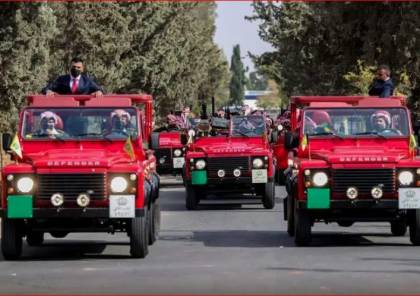
The red procession that Jordanian Crown Prince Hussein bin Abdullah will wed at his wedding on Thursday is a royal tradition that has been extended since the founding of the kingdom.
The procession goes around on official occasions and national celebrations, dressed in majestic army uniforms, horses, red kaffiyehs, red open military vehicles and bicycles, which made it linked to the conscience of Jordanians.
Today, the red procession begins surrounding the Crown Prince, starting from Zahran Palace to the Husseiniya Palace, in a royal tradition that began a hundred years ago, when its beginnings were on horses and camels.
The red procession was launched for the first time during the reign of King Abdullah the First, several times, and changes occurred that were suitable for each stage, until the red color was adopted for it.
The procession consists of twenty classic convertible four-wheel-drive Land Rover cars belonging to the Royal Hashemite Court, accompanied by ten red bicycles, which are present on national occasions, in an organized and harmonious manner.
The adoption of the red color came in relation to the burgundy-red Hashemite flag that is part of the procession, in addition to the yellow flag of the Royal Guard and its insignia represented by the face of the lion and the two swords. To a red scarf on their chest.
The red procession constituted a historical record of many events, as it departs by order of King Abdullah II, on certain occasions such as national holidays and official occasions such as the anniversary of independence or the visit of His Majesty the King to the Martyr’s Monument, during the celebrations of the Army Day and the Great Arab Revolt, and he accompanies the King while heading to the National Assembly, to deliver the Throne Speech.
The procession takes place during the weddings of Their Royal Highnesses, and during the official visits of kings and heads of brotherly and friendly countries, as well as during official funeral ceremonies.
The sequence of the procession consisted of being a unit and secret, and the designations evolved into a formation that followed the command of the Special Royal Guard.





